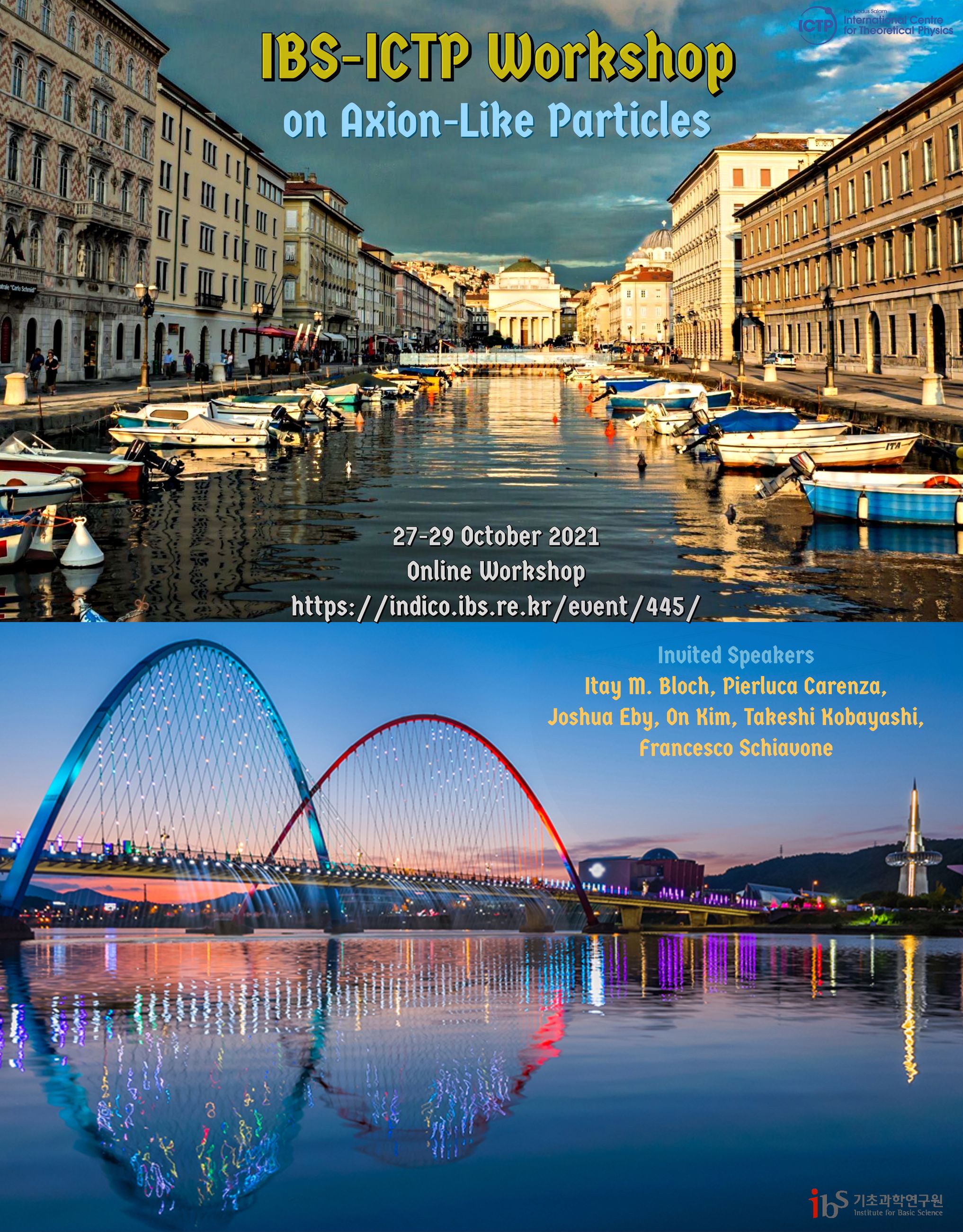IBS-ICTP Workshop on Axion-Like Particles
Zoom
IBS-CTPU
The IBS-ICTP Workshop on Axion-Like Particles is a joint project between IBS-CTPU and ICTP particle theory group.
Recently new ideas on terrestrial, astrophysical, and cosmological probes of axions are constantly being developed with considerable progress. The purpose of this focus program is to encourage young researchers/experts in a collaborative environment to discuss together recent progress on those subjects and to develop innovative ideas for searching for axions. The topic will cover direct detection of the QCD axion and axion-like particles in new laboratory experiments, axion production from astrophysical sources, and possible cosmological scenarios.
The Institute for Basic Science (IBS), comprises 30 centers, including three experimental and theoretical ones on particle physics and cosmology:
- Center for Theoretical Physics of the Universe (CTPU)
- Center for Axion and Precision Physics Research (CAPP)
- Center for Underground Physics (CUP)
The Abdus Salam International Centre for Theoretical Physics (ICTP) comprises
several sections working on different fields of theoretical physics and
mathematics including
- The High Energy, Cosmology, and Astroparticle (HECAP)
Please note that the Zoom link and password will be required to join the talks, and they will be shared only to registered participants.
Invited speakers
Itay M. Bloch (Tel-Aviv U)
Pierluca Carenza (Oskar Klein Center, Stockholm U)
Joshua Eby (Kavli IPMU, U of Tokyo)
On Kim (IBS-CAPP)
Takeshi Kobayashi (SISSA)
Francesco Schiavone (U of Bari)

Venue
IBS-CTPU (Zoom), Daejeon, Republic of Korea
Previous workshops
IBS-ICTP Workshop on Axion-Like Particles (21-23 October 2020)
IBS-ICTP Workshop on Axion-Like Particles (08-12 November 2019)
Sponsored by

Alessandro Mirizzi
Alexandros Papageorgiou
Alexey Zhevlakov
AMAN Gupta
Andrea Vacchi
Anton Sokolov
Cem Eröncel
Chan Beom Park
Christopher Eckner
CHRISTOS KOKORELIS
Cristina Fernández
Dibyendu Nanda
Dilip Kumar Ghosh
Diptimoy Ghosh
Farman Ullah
Francesco Schiavone
Francesco Sivo
Gabrijela Zaharijas
Gagandeep Kaur
Giovanni Villadoro
Giulio Neri
Giuseppe Lucente
Hyeonseok Seong
Hyun Min Lee
Itay Bloch
J. Hwang
Jacob Leedom
Jeong-Pyong Hong
Joshua Eby
Junichiro Kawamura
Kensuke Akita
Lorenzo Ubaldi
Matteo Viel
maurizio giannotti
Muhammad Farooq
NANDINI DAS
Nayara Fonseca
Neil Barrie
Nosratollah Jafari Sonbolabadi
Omkar Shetye
On Kim
Pablo Quilez
Pablo Soler
Peera Simakachorn
Peiwen Wu
Percy Cáceres
Philip Soerensen
Pierluca Carenza
Praniti Singh
Rajeev Kumar Jain
Sandeep Kumar Shekhar
Sang Hui Im
Sanghyeon Chang
Saumyen Kundu
Shourya Mukherjee
Shreyashi Chakdar
Siddhartha Karmakar
Sk Jeesun
So Young Shim
Stephen Lonsdale
Sunghoon Jung
SungWoo Youn
Takahiro Terada
Takeshi Kobayashi
yahya mekaoui
